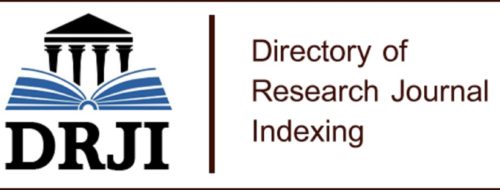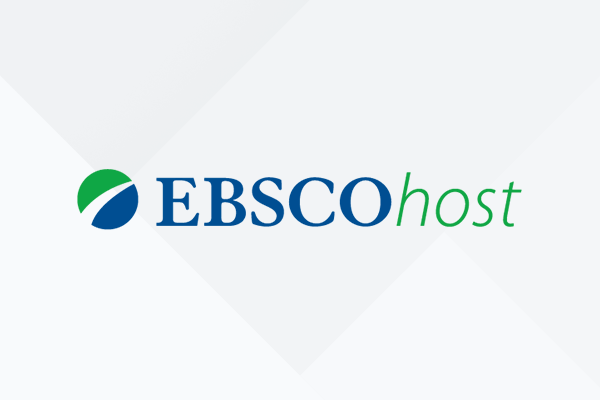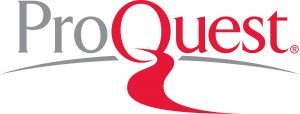Öz
Bu çalışma, kurumsal kuram düşünce okulunun temel tezlerini ve ortaya koyduğu temel argümanları inceleyerek örgütsel meşruiyet ve meşruiyet süreçlerine ilişkin kurumsal görüşü araştırmaktadır. Hiç şüphesiz, örgütsel meşruiyet kavramı tek bir paradigma ya da tek bir teorik mercekle açıklanabilecek veya sınırlandırılabilecek basit bir olgu değildir. Ancak, teorilerin araştırılan olguları etkileyen en ilgili faktörleri saptadığı düşüncesinden hareketle, kurumsal düşünce okulunun örgütsel meşruiyeti nasıl benimsediğini kristalleştirerek daha ileri teorik araştırmaların yolunu açmak hedeflenmektedir. Bu bağlamda, bu çalışma örgütsel meşruiyeti şekillendiren faktörlere derinlemesine bir bakış sunarak kurumsal yaklaşımın örgütsel meşruiyet yaklaşımını analiz etmekte ve üç temel kurumsal yönelimi ortaya koymaktadır. Makale, meşruiyet kazanmada kültürel çerçevelerin önemine işaret ederek ve gelecekteki araştırmalara yönelik öneriler sunarak sonuçlandırılmıştır.
Anahtar Kelimeler
Kaynakça
- Aldrich, H., & C. M. Fiol, (1994). Fools Rush in? The Institutional Context of Industry Creation, Academy of Management Review 19 (4): 645–670, https://doi.org/10.2307/258740
- Berger Peter L. & Luckmann Thomas (1967). The Social Construction of Reality; a Treatise in the Sociology of Knowledge. Penguin, Harmondsworth (Original: Doubleday. Garden City, N. Y. 1966), https://doi.org/10.2307/3710424
- Bitektine, Alex. (2011). Toward a Theory of Social Judgments of Organizations: The Case of Legitimacy, Reputation, and Status. Academy of Management Review. 36. 151-179, https://doi.org/10.5465/amr.2009.0382
- Brown, A. D. 1998. Narrative, politics and legitimacy in an IT implementation. Journal of Management Studies, 35: 35-58. https://doi.org/10.1111/1467-6486.00083
- Cathryn Johnson. (2004). Introduction: Legitimacy Process in Organization, in Cathryn Johnson (ed.) Legitimacy Processes in Organizations (Research in the Sociology of Organizations, Volume 22) Emerald Group Publishing Limited, pp.1 – 24,
- Cathryn Johnson, Timothy J. Dowd, Cecilia L. Ridgeway.( 2006). Legitimacy as a Social Process. Annual Review of Sociology 32:1, 53-78, https://doi.org/10.1146/annurev.soc.32.061604.123101
- Çakar, M., Danışman A. (2012). Örgüt kuramları: Kurumsal kuram (Ed: C. Sö en, N. Basım). İstanbul: Beta. s.241-271.
- Chimezie A. B. Osigweh, Yg. (1989). Concept Fallibility in Organizational Science. The Academy of Management Review,14(4), 579-594. http://doi.org/10.2307/258560
- Collins, Randall. 1975. Conflict Sociology: Toward an Explanatory Science. Academic Press.
- Deephouse, D. & Suchman, M. (2008). Legitimacy in organizational institutionalism. In R. GreenwoodC. Oliver & R. Suddaby The SAGE handbook of organizational institutionalism (pp. 49-77). London: SAGE Publications Ltd., http://dx.doi.org/10.4135/9781849200387.n2
- DiMaggio, P., & Powell, W. (1983). The Iron Cage Revisited: Institutional Isomorphism and Collective Rationality in Organizational Fields. American Sociological Review, 48(2), 147-160., https://doi.org/10.2307/2095101
- DiMaggio, P. J. , & Powell, W. W. (1991). Introduction. In W. W. Powell & P. J. DiMaggio (Eds.), The new institutionalism in organizational analysis (pp. 1-40). Chicago: University of Chicago Press.
- Dooley, K. (2002), “Organizational Complexity,” International Encyclopedia of Business and Management, M. Warner (ed.), London: Thompson Learning, p. 5013- 5022.
- Dornbusch, S. D., & Scott, W. R. (1975). Evaluation and the Exercise of Authority. San Francisco: Jossey-Bass.
- Dowling, J. & Pfeffer, J. (1975). Organizational Legitimacy: Social Values and Organizational Behavior Pacific Sociological Review. 18: 122-136, https://doi.org/10.2307/1388226
- Ghoshal, S., & Bartlett, C. (1990). The Multinational Corporation as an Interorganizational Network. The Academy of Management Review, 15(4),603-625. https://doi.org/10.5465/amr.1990.4310825
- Greenwood, R., Oliver, C., Suddaby, R. & Sahlin, K. (2008). The SAGE handbook of organizational institutionalism London: SAGE Publications Ltd. http://dx.doi.org/10.4135/9781849200387
- Habermas, Jurgen. 1973. Legitimation Crisis. Beacon Press.
- Jepperson, R. L. (1991). Institutions, institutional effects, and institutionalism. In W. W. Powell & P. J. DiMaggio (eds.), The New Institutionalism in Organizational Analysis: 143–163. Chicago: University of Chicago Press.
- Kalemci A, Kalemci Tüzün İ. (2008). Örgütsel alanda Meşruiyet Kavramının Açılımı: Kurumsal ve Stratejik Meşruiyet. Süleyman Demirel Üniversitesi İktisadi ve İdari Bilimler Fakültesi Dergisi, 13(2):403-413.
- Kauffman, S., Keskinen, A., Aaltonen, M., Kaufmann, S., & Mitleton-Kelly, E. (2003). Organisational Complexity Foreword.
- Kostova, T. & Zaheer, S. (1999). Organizational legitimacy under conditions of complexity: The case of the multinational enterprise. Academy of Management Review, 24(1): 64–81., https://doi.org/10.5465/AMR.1999.1580441
- Kyung Ho Kang and Seoki Lee, (2014). The moderating role of brand diversification on the relationship between geographic diversification and firm performance in the US lodging industry, International Journal of Hospitality Management,Volume 38,Pages 106-117,ISSN 0278-4319,, https://doi.org/10.1016/j.ijhm.2013.01.001.
- Lawrence, P., & Lorsch, I. 1967. Differentiation and integration in complex organizations. Administrative Science Quarterly, 12: 1-47.
- Lenski, Gerhard. 1966. Power and Privilege. McGraw-Hill.
- L. Richard Della Fave, (1986). Toward an Explication of the Legitimation Process, Social Forces, Volume 65, Issue 2, December, Pages 476–500, https://doi.org/10.1093/sf/65.2.476
- Massey, J.E. (2001). Managing organizational legitimacy: communication strategies for organizations in crisis, The Journal of Business Communication, Vol. 38 No. 2, pp. 153-183.
- Maurer, J.G. (1971). Readings in Organization Theory: Open- System Approaches. New York Random House.
- Mazza, C. (1999). Claim, intent, and persuasion: Organizational legitimacy and the rhetoric of corporate mission statements. Boston: Kluwer, https://doi.org/10.1007/978-1-4615-5061-7
- Meyer, J. W. & Scott, W. R. (1983). Organizational Environments. Ritual and Rationality. BeverlyHills: Sage.
- Meyer, J. W. & Scott, W. R. (1983). Organizational Environments. Ritual and Rationality. BeverlyHills: Sage., https://doi.org/10.1002/pam.4050030417
- Meyer, J., & Rowan, B. (1977). Institutionalized Organizations: Formal Structure as Myth and Ceremony. American Journal of Sociology, 83(2), 340-363. Retrieved February 13, 2020, from www.jstor.org/stable/2778293
- Mintzberg, H., Waters, J.A., (1982). Tracking strategy in an entrepreneurial firm.Academy of Management Journal 25 (3), 465–499. https://doi.org/10.5465/256075
- Ossewaarde, R., Nijhof, A., & Heyse, L. (2008). Dynamics of NGO legitimacy: How organising betrays core missions of INGOs. Public Administration and Development, 28, 42–53., https://doi.org/10.1002/pad.472
- Parsons, T. (1956). Suggestions for a Sociological Approach to the Theory of Organizations-I. Administrative Science Quarterly,1(1), 63-85., https://doi.org/10.2307/2390840
- Parsons, T. (1960). Structure and Process in Modern Societies. Glencoe, IL: Free Press.
- Pfeffer, J., & Salancik, G. R. (1978). The External Control of Organizations: A Resource Dependence Perspective. New York: Harper & Row.
- Powell, W.W. (1988). Institutional effects on organizational structure and performance. In L.G. Zucker (ed.), Institutional Patterns and Organizations: Culture and Environment, pp.115–36. Cambridge, MA: Ballinger
- Ruef, M., & Scott, W.R.(1998). A multidimensional model of organizational legitimacy: Hospital survival in changing institutional environments: Administrative Science Quarterly, 43 (4): 877–904., https://doi.org/10.2307/2393619
- Selznick, Philip, (1949). TVA and the Grass Roots. Berkeley: University of California Press.
- Selznick, P. (1957). Leadership in Administration. Berkeley: University of California Press.
- Selznick, P. (1996). Institutionalism ‘old’ and ‘new.’ Administrative Science Quarterly, 41: 270–277.
- Scott, W.R. (1995). Institutions and Organizations, Sage, Thousand Oaks, CA. Scott, W. R. (2001). Institutions and organizations. 2nd ed. Thousand Oaks, CA: Sage.
- Scott, W. R. (2014). Institutions and organizations. 4th ed. Thousand Oaks, CA: Sage
- Scott, W. R. (2003). Organizations: Rational, Natural, and Open Systems. UpperRiver, NJ: Prentic
- Scott, W.R. (2004). Reflections on a half-century of organizational sociology. Annual Review of Sociology, 30: 1–21.
- Singh, J.V., Tucker, D.J. and House, R.J. (1986) Organizational Legitimacy and the Liability of Newness. Administrative Science Quarterly, 31, 171-193. https://doi.org/10.2307/2392787
- Suchman, M. C. (1995). Managing legitimacy: Strategic and institutional approaches. Academy of Management Journal, 20(3), 571- 610., https://doi.org/10.2307/258788
- Thompson, James (1967.) Organizations in Action. New York: McGraw-Hil
- Tolbert, Pamela S., and Lynne G. Zucker. (1983). Institutional sources of change in the formal structure of organizations: The diffusion of civil service reform, 1880–1935. Administrative Science Quarterly 28:22–39.
- Tolbert, P. and L. Zucker (1996), The institution- alization of institutional theory, in Clegg et al. (eds.), pp. 175–190. Tost, L. (2011). An integrative model of legitimacy judgments. Academy of Management Review, 36(4), 686–710. https://doi.org/10.5465/amr.2010.0227
- Yüncü,V. & Koparal, C. (2017). "Fundamental Paradigms for Corporate Reputation," Economics and Applied Informatics, "Dunarea de Jos" University of Galati, Faculty of Economics and Business Administration, issue 2, pages 60-65
- Yüncü,V. & Fidan,Ü. (2019). Integrating organizational reputation mechanism to decision-making processes: the facebook case. Yönetim Bilimleri Dergisi /Journal of Administrative Sciences Cilt/Volume 17, Sayı/N: 34 ss.pp.: 301-322, https://doi.org/10.35408/comuybd.425271
- Walker, Henry. (2004). Beyond power and domination: legitimacy and formal organizations.. Research in the Sociology of Organizations. 22. 239-271. https://doi.org/10.1016/S0733-558X(04)22008-0
- Weber, M. (1968). Economy and society. G. Roth & C. Wittich (Eds). Berkeley, CA: University of California Press.
- Wright, E. O. (1985). Practical strategies for transforming concepts. In E. O.
- Wright (Ed.), Classes: 292-302. London, UK: Verso
- Zelditch, M., Jr. (2001). Theories of legitimacy. In: J. Jost & B. Major (Eds), The Psychology of Legitimacy: Emerging Perspectives on Ideology, Justice, and Intergroup Relations (pp. 33–53). Cambridge: Cambridge University Press.
- Zimmerman, M. A., & Zeitz, G. J. (2002). Beyond survival: Achieving new venture growth by building legitimacy. Academy of Management Review, 27(3), 414
Öz
This paper investigates the institutional view on organizational legitimacy and legitimation processes by addressing the principal theses of the institutional school of thought and fundamental arguments raised by institutionalists. Beyond a shadow of doubt, the notion of organizational legitimacy is not a simple phenomenon that can be confined to a sole paradigm or a phenomenon that be explained through a sole theoretical lens. However, based on the idea that theories pinpoint the most relevant factors affecting the phenomena under investigation, I aim to pave the way for further theoretical research by crystallizing how the institutional school of thought embraces organizational legitimacy. In this regard, this paper analyzes the institutional approach to organizational legitimacy by suggesting an in-depth overview of the factors that shape organizational legitimacy and identifies three essential institutional orientations. The paper concludes by indicating to the prominence of cultural frameworks in gaining legitimacy and by suggesting directions for future research.
Anahtar Kelimeler
Organization Theory Organizational Legitimacy Legitimacy Institutional Theory
Kaynakça
- Aldrich, H., & C. M. Fiol, (1994). Fools Rush in? The Institutional Context of Industry Creation, Academy of Management Review 19 (4): 645–670, https://doi.org/10.2307/258740
- Berger Peter L. & Luckmann Thomas (1967). The Social Construction of Reality; a Treatise in the Sociology of Knowledge. Penguin, Harmondsworth (Original: Doubleday. Garden City, N. Y. 1966), https://doi.org/10.2307/3710424
- Bitektine, Alex. (2011). Toward a Theory of Social Judgments of Organizations: The Case of Legitimacy, Reputation, and Status. Academy of Management Review. 36. 151-179, https://doi.org/10.5465/amr.2009.0382
- Brown, A. D. 1998. Narrative, politics and legitimacy in an IT implementation. Journal of Management Studies, 35: 35-58. https://doi.org/10.1111/1467-6486.00083
- Cathryn Johnson. (2004). Introduction: Legitimacy Process in Organization, in Cathryn Johnson (ed.) Legitimacy Processes in Organizations (Research in the Sociology of Organizations, Volume 22) Emerald Group Publishing Limited, pp.1 – 24,
- Cathryn Johnson, Timothy J. Dowd, Cecilia L. Ridgeway.( 2006). Legitimacy as a Social Process. Annual Review of Sociology 32:1, 53-78, https://doi.org/10.1146/annurev.soc.32.061604.123101
- Çakar, M., Danışman A. (2012). Örgüt kuramları: Kurumsal kuram (Ed: C. Sö en, N. Basım). İstanbul: Beta. s.241-271.
- Chimezie A. B. Osigweh, Yg. (1989). Concept Fallibility in Organizational Science. The Academy of Management Review,14(4), 579-594. http://doi.org/10.2307/258560
- Collins, Randall. 1975. Conflict Sociology: Toward an Explanatory Science. Academic Press.
- Deephouse, D. & Suchman, M. (2008). Legitimacy in organizational institutionalism. In R. GreenwoodC. Oliver & R. Suddaby The SAGE handbook of organizational institutionalism (pp. 49-77). London: SAGE Publications Ltd., http://dx.doi.org/10.4135/9781849200387.n2
- DiMaggio, P., & Powell, W. (1983). The Iron Cage Revisited: Institutional Isomorphism and Collective Rationality in Organizational Fields. American Sociological Review, 48(2), 147-160., https://doi.org/10.2307/2095101
- DiMaggio, P. J. , & Powell, W. W. (1991). Introduction. In W. W. Powell & P. J. DiMaggio (Eds.), The new institutionalism in organizational analysis (pp. 1-40). Chicago: University of Chicago Press.
- Dooley, K. (2002), “Organizational Complexity,” International Encyclopedia of Business and Management, M. Warner (ed.), London: Thompson Learning, p. 5013- 5022.
- Dornbusch, S. D., & Scott, W. R. (1975). Evaluation and the Exercise of Authority. San Francisco: Jossey-Bass.
- Dowling, J. & Pfeffer, J. (1975). Organizational Legitimacy: Social Values and Organizational Behavior Pacific Sociological Review. 18: 122-136, https://doi.org/10.2307/1388226
- Ghoshal, S., & Bartlett, C. (1990). The Multinational Corporation as an Interorganizational Network. The Academy of Management Review, 15(4),603-625. https://doi.org/10.5465/amr.1990.4310825
- Greenwood, R., Oliver, C., Suddaby, R. & Sahlin, K. (2008). The SAGE handbook of organizational institutionalism London: SAGE Publications Ltd. http://dx.doi.org/10.4135/9781849200387
- Habermas, Jurgen. 1973. Legitimation Crisis. Beacon Press.
- Jepperson, R. L. (1991). Institutions, institutional effects, and institutionalism. In W. W. Powell & P. J. DiMaggio (eds.), The New Institutionalism in Organizational Analysis: 143–163. Chicago: University of Chicago Press.
- Kalemci A, Kalemci Tüzün İ. (2008). Örgütsel alanda Meşruiyet Kavramının Açılımı: Kurumsal ve Stratejik Meşruiyet. Süleyman Demirel Üniversitesi İktisadi ve İdari Bilimler Fakültesi Dergisi, 13(2):403-413.
- Kauffman, S., Keskinen, A., Aaltonen, M., Kaufmann, S., & Mitleton-Kelly, E. (2003). Organisational Complexity Foreword.
- Kostova, T. & Zaheer, S. (1999). Organizational legitimacy under conditions of complexity: The case of the multinational enterprise. Academy of Management Review, 24(1): 64–81., https://doi.org/10.5465/AMR.1999.1580441
- Kyung Ho Kang and Seoki Lee, (2014). The moderating role of brand diversification on the relationship between geographic diversification and firm performance in the US lodging industry, International Journal of Hospitality Management,Volume 38,Pages 106-117,ISSN 0278-4319,, https://doi.org/10.1016/j.ijhm.2013.01.001.
- Lawrence, P., & Lorsch, I. 1967. Differentiation and integration in complex organizations. Administrative Science Quarterly, 12: 1-47.
- Lenski, Gerhard. 1966. Power and Privilege. McGraw-Hill.
- L. Richard Della Fave, (1986). Toward an Explication of the Legitimation Process, Social Forces, Volume 65, Issue 2, December, Pages 476–500, https://doi.org/10.1093/sf/65.2.476
- Massey, J.E. (2001). Managing organizational legitimacy: communication strategies for organizations in crisis, The Journal of Business Communication, Vol. 38 No. 2, pp. 153-183.
- Maurer, J.G. (1971). Readings in Organization Theory: Open- System Approaches. New York Random House.
- Mazza, C. (1999). Claim, intent, and persuasion: Organizational legitimacy and the rhetoric of corporate mission statements. Boston: Kluwer, https://doi.org/10.1007/978-1-4615-5061-7
- Meyer, J. W. & Scott, W. R. (1983). Organizational Environments. Ritual and Rationality. BeverlyHills: Sage.
- Meyer, J. W. & Scott, W. R. (1983). Organizational Environments. Ritual and Rationality. BeverlyHills: Sage., https://doi.org/10.1002/pam.4050030417
- Meyer, J., & Rowan, B. (1977). Institutionalized Organizations: Formal Structure as Myth and Ceremony. American Journal of Sociology, 83(2), 340-363. Retrieved February 13, 2020, from www.jstor.org/stable/2778293
- Mintzberg, H., Waters, J.A., (1982). Tracking strategy in an entrepreneurial firm.Academy of Management Journal 25 (3), 465–499. https://doi.org/10.5465/256075
- Ossewaarde, R., Nijhof, A., & Heyse, L. (2008). Dynamics of NGO legitimacy: How organising betrays core missions of INGOs. Public Administration and Development, 28, 42–53., https://doi.org/10.1002/pad.472
- Parsons, T. (1956). Suggestions for a Sociological Approach to the Theory of Organizations-I. Administrative Science Quarterly,1(1), 63-85., https://doi.org/10.2307/2390840
- Parsons, T. (1960). Structure and Process in Modern Societies. Glencoe, IL: Free Press.
- Pfeffer, J., & Salancik, G. R. (1978). The External Control of Organizations: A Resource Dependence Perspective. New York: Harper & Row.
- Powell, W.W. (1988). Institutional effects on organizational structure and performance. In L.G. Zucker (ed.), Institutional Patterns and Organizations: Culture and Environment, pp.115–36. Cambridge, MA: Ballinger
- Ruef, M., & Scott, W.R.(1998). A multidimensional model of organizational legitimacy: Hospital survival in changing institutional environments: Administrative Science Quarterly, 43 (4): 877–904., https://doi.org/10.2307/2393619
- Selznick, Philip, (1949). TVA and the Grass Roots. Berkeley: University of California Press.
- Selznick, P. (1957). Leadership in Administration. Berkeley: University of California Press.
- Selznick, P. (1996). Institutionalism ‘old’ and ‘new.’ Administrative Science Quarterly, 41: 270–277.
- Scott, W.R. (1995). Institutions and Organizations, Sage, Thousand Oaks, CA. Scott, W. R. (2001). Institutions and organizations. 2nd ed. Thousand Oaks, CA: Sage.
- Scott, W. R. (2014). Institutions and organizations. 4th ed. Thousand Oaks, CA: Sage
- Scott, W. R. (2003). Organizations: Rational, Natural, and Open Systems. UpperRiver, NJ: Prentic
- Scott, W.R. (2004). Reflections on a half-century of organizational sociology. Annual Review of Sociology, 30: 1–21.
- Singh, J.V., Tucker, D.J. and House, R.J. (1986) Organizational Legitimacy and the Liability of Newness. Administrative Science Quarterly, 31, 171-193. https://doi.org/10.2307/2392787
- Suchman, M. C. (1995). Managing legitimacy: Strategic and institutional approaches. Academy of Management Journal, 20(3), 571- 610., https://doi.org/10.2307/258788
- Thompson, James (1967.) Organizations in Action. New York: McGraw-Hil
- Tolbert, Pamela S., and Lynne G. Zucker. (1983). Institutional sources of change in the formal structure of organizations: The diffusion of civil service reform, 1880–1935. Administrative Science Quarterly 28:22–39.
- Tolbert, P. and L. Zucker (1996), The institution- alization of institutional theory, in Clegg et al. (eds.), pp. 175–190. Tost, L. (2011). An integrative model of legitimacy judgments. Academy of Management Review, 36(4), 686–710. https://doi.org/10.5465/amr.2010.0227
- Yüncü,V. & Koparal, C. (2017). "Fundamental Paradigms for Corporate Reputation," Economics and Applied Informatics, "Dunarea de Jos" University of Galati, Faculty of Economics and Business Administration, issue 2, pages 60-65
- Yüncü,V. & Fidan,Ü. (2019). Integrating organizational reputation mechanism to decision-making processes: the facebook case. Yönetim Bilimleri Dergisi /Journal of Administrative Sciences Cilt/Volume 17, Sayı/N: 34 ss.pp.: 301-322, https://doi.org/10.35408/comuybd.425271
- Walker, Henry. (2004). Beyond power and domination: legitimacy and formal organizations.. Research in the Sociology of Organizations. 22. 239-271. https://doi.org/10.1016/S0733-558X(04)22008-0
- Weber, M. (1968). Economy and society. G. Roth & C. Wittich (Eds). Berkeley, CA: University of California Press.
- Wright, E. O. (1985). Practical strategies for transforming concepts. In E. O.
- Wright (Ed.), Classes: 292-302. London, UK: Verso
- Zelditch, M., Jr. (2001). Theories of legitimacy. In: J. Jost & B. Major (Eds), The Psychology of Legitimacy: Emerging Perspectives on Ideology, Justice, and Intergroup Relations (pp. 33–53). Cambridge: Cambridge University Press.
- Zimmerman, M. A., & Zeitz, G. J. (2002). Beyond survival: Achieving new venture growth by building legitimacy. Academy of Management Review, 27(3), 414
Ayrıntılar
| Birincil Dil | İngilizce |
|---|---|
| Bölüm | Makaleler |
| Yazarlar | |
| Yayımlanma Tarihi | 30 Ağustos 2020 |
| Kabul Tarihi | 13 Temmuz 2020 |
| Yayımlandığı Sayı | Yıl 2020 |













ERÜ İktisadi ve İdari Bilimler Fakültesi Dergisi 2021 | iibfdergi@erciyes.edu.tr
Bu eser Creative Commons Atıf-Gayri Ticari-Türetilemez 4.0 Uluslararası Lisansı ile lisanslanmıştır.


